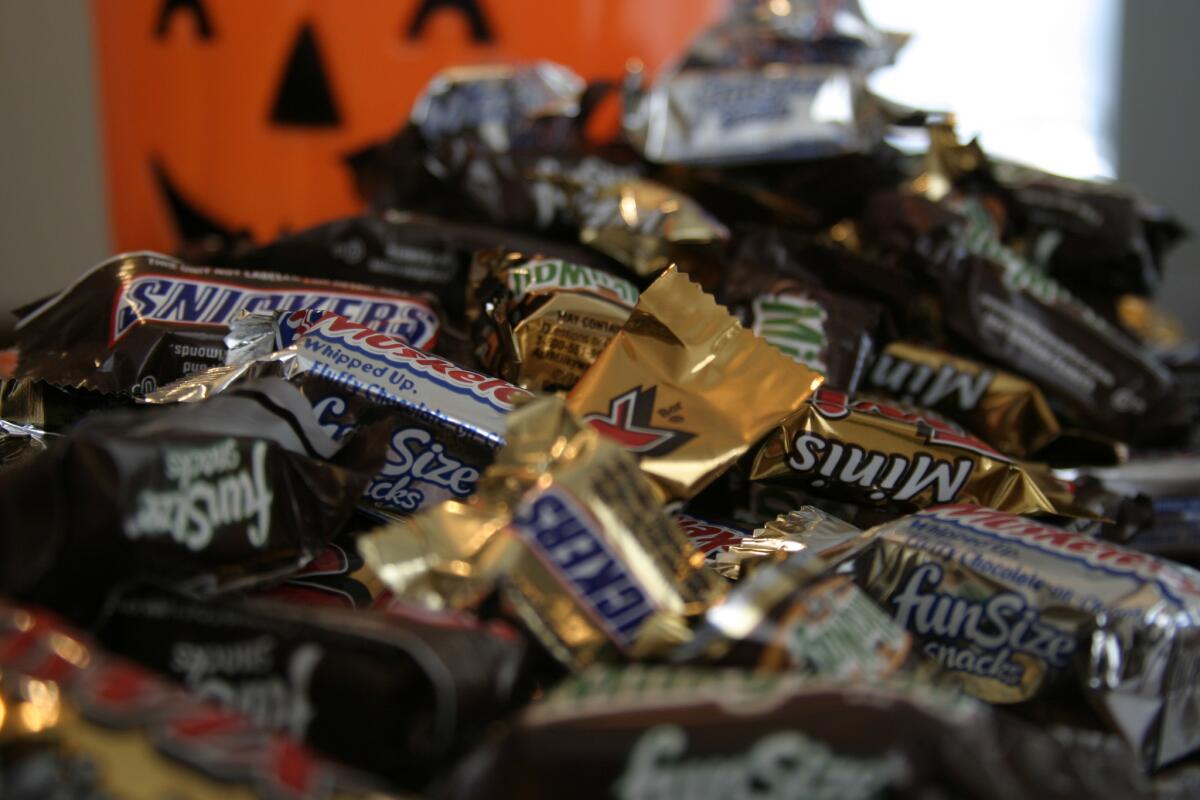How to trick your kids into having a healthy Halloween

It’s that time of year.
Let’s be realistic. Halloween is happening, and your kid is going to eat candy. It's important to accept that fact now, so you can be ready.
But how can you minimize the damage? Education Matters spoke to registered dietician Melissa Halas-Liang to get her suggestions on how to prepare for and try to mitigate the oncoming sugar rush. Here are her tips, and some of our own.
Don’t bring candy to school parties
The kids are all going to go trick-or-treating, so they don’t need to have candy in class, too. It’s possible to bring healthy snacks that are still on theme. For example, Halas-Liang suggested a jack-o’-lantern that’s throwing up guacamole, surrounded by baked chips.
Eat first, then trick-or-treat
It’s very easy to forget to eat dinner in the rush to finish the costume and beat the other kids to the good candy.
However, Halas-Liang said, “It’s really important that before you go out, kids eat a balanced, healthy meal,” Halas-Liang said. That means whole grains, lean protein, vegetables and fibers. This will help kids fill up and reduce the likelihood of total candy gorging.
A tuna sandwich with carrots and baby tomatoes is a good pre-Halloween dinner, she says. (And hey, that might even deter them from eating too much candy right away — who wants to mix the tastes of candy and tuna?)
Walk, don’t chauffeur
Don’t drive your kids from neighborhood to neighborhood. Let them walk from door to door; this gives them some exercise, and it’ll likely reduce the amount of candy they get overall because they’re spending more time walking and less time collecting.
Set rules
Like not eating candy while walking. If the candy must be consumed at home, it’s easier to keep track of. Having a full meal before trick-or-treating will help with this.
‘Trick or toy’
Don’t contribute to the sugary mess other parents have to deal with. Give kids small toys when they come to the door. Halas-Liang doles out themed stickers, temporary tattoos and light-up bounce balls.
Narrow the options
OK, the kids are back, there’s too much candy. What to do? Be fair: Let your kid choose three or five kinds candies to keep. Yes, “chocolate” is too broad. This means, for example, she would get to keep all of the following that are in their basket (or pillowcase): Reese’s peanut butter cups, orange tootsie pops and Dots (yes, those would be my picks).
Turn your kids into entrepreneurs
You don’t have to throw out the rest of the candy.
Many dentists have buy-back programs. They’ll give children $1 for each pound of candy they bring in (up to 5 pounds) and often a dental kit. The candy gets donated to Operation Gratitude, which packages it and sends it to troops.
In the Glendale dental office where office manager Lynnsey Woodward works, she collects between 230 and 280 pounds of candy each year, she said.
Trick your kids
It’s called trick-or-treat for a reason, right? There are ways to nudge your kids into forgetting about their extra Halloween candy.
You might want to keep extra candy in the house to munch on yourself. There are ways to do this, and also to teach your children to pace themselves. Halas-Liang suggests putting all the candy in a paper bag, and putting it on top of the fridge. Each day, your kid can have one piece of candy. But you can get away with throwing some out each day or eating some—they’re not likely to notice if the supply diminishes a little more quickly than it’s supposed to.
Another method is to suggest that they freeze some candy to make sure it stays fresh for later. Again, the kids likely will forget about the candy in the freezer.
Steal it, eat it and send a video to Jimmy Kimmel
This is my own suggestion. Every year, late-night host Jimmy Kimmel asks parents to tell kids that you ate all their candy, and to videotape their reactions. Every year, kids freak out, and hilarity ensues.
The parents usually give the candy back, but you don’t have to.
Reach Sonali Kohli on Twitter @Sonali_Kohli or by email at Sonali.Kohli@latimes.com.
Sign up for Essential California
The most important California stories and recommendations in your inbox every morning.
You may occasionally receive promotional content from the Los Angeles Times.







